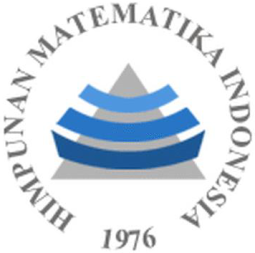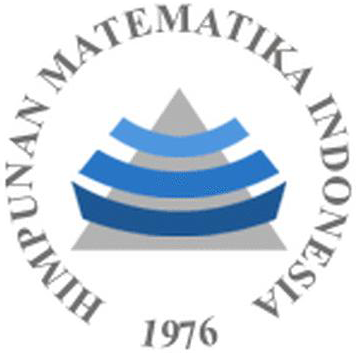The diagram shown here will also help you understand the QFD methodology here. Once the matrices are completed, Six Sigma Black Belt practitioners can use the information to design their process or product according to critical target values and customer requirements. Six Sigma is all about producing products or services that deliver on customer demands. Quality function deployment is just another way to design processes that produce products or services that satisfy the customer. By putting Quality Function Deployment (QFD) into practice, businesses can deliver goods and services that genuinely meet the needs of their clients. QFD promotes customer-centric design and decision-making by methodically gathering customer feedback, connecting requirements with technical descriptors, setting design goals, and creating creative solutions.
Based on the product and component specifications found in the previous phase, this section identifies processes necessary to build features and deliver functionality. The tunnel vision focus of QFD on the customer can also have some negative repercussions if customer needs drive up product costs or delay technological innovations that could benefit the company down the line. First of all, it can be a seismic change for some organizations, particularly those with an established process primarily focused on profitability and cost reduction. By using QFD, you are forced to focus your development efforts on your customer’s needs and specific requirements. Quantitative values for the requirements are captured in the “how much” cells at the end of rows and columns, see Figure 2.7.
The main benefit of QFD is that it ensures the customer is considered in both the design and development process, resulting in products that are more likely to satisfy your customers. Companies must bring new and improved products to market that meet the customer’s actual wants and needs while reducing development time. QFD methodology is for organizations committed to listening to the Voice of the Customer and meeting their needs. They gathered extensive voice of the customer (VOC) to determine the requirements of how people want to bank at a banking center. This consisted of determining banking process attributes, correlating them and setting targets for each based on customer expectations. They also compared how their competitors were doing with respect to the same requirements.
Both Rooms 1 and 2 need knowledge of the market place, hence are best filled by the Marketing Department. Room 3 encompasses the relative importance of the CRs and can be judged according to a priority scale developed as 1—not important, 2—important, 3—much more important, 4—very important, and 5—most important. In this room, the CRs are quantified and ranked in order of their importance. Following this procedure, the requirements demanding more improvement are considered as prime selling points by Marketing, thus obtain higher weighting.
3.1 QFD1 and QFD2 Matrices
The HoQ (also known as the product planning matrix) is a primary tool used in QFD and usually comprises of nine different sections, or so-called Rooms. The Rooms in the HoQ must be completed or filled step-by-step as shown in Fig. Build and deliver a quality product or service by concentrating everybody towards the customer satisfaction.
From design concepts right through to what things are inspected and controlled in manufacture all relate back to customer requirements. The tool was first used to design an oil tanker at the Kobe shipyards of Japan in 1972 by Yoji Akao and Shigeru Mizuno to design customer satisfaction into a service offering before it is produced. Prior to this, quality control methods were primarily aimed at fixing a problem during or after production. In the mid-1980s, Don Clausing of MIT introduced this design tool to the United States.
Materials selection in the context of design problem-solving
Choose the precise good or service for which you’ll be putting QFD into practice. Think about your target market, your intended audience, and any unique needs or restrictions. Setting boundaries and ensuring that the subsequent steps are in line with the project’s goal are accomplished by defining the scope. Product people tend to oversimplify the jobs-to-be-done framework by focusing only on the most straightforward part — customers’ functional jobs — and ignoring their emotional and social needs. To put as fine a point on it as possible, quality function can help you validate whether you’re on the right path to satisfying your customers.
- You should discover which process will have the best impact on creating the product specs.
- QFD is also deployed in quality improvement, quality management, military needs and consumer products.
- Think about things like performance, cost, manufactureability, marketability, and conformity to customer demands.
- And by limiting product development activities to just the things customers are asking for, the overall process is faster, more efficient, and less expensive.
- QFD promotes customer-centric design and decision-making by methodically gathering customer feedback, connecting requirements with technical descriptors, setting design goals, and creating creative solutions.
QFD, with its emphasis on rigorous requirement management before solution development, represents a step change from a traditional way of approaching product development processes. The traditional design approach may have tended to develop solutions and https://www.globalcloudteam.com/ commit to designs early in the product development process. Designers and engineers would not have ignored the VOC completely; but, by choosing designs too early there was an increased risk that the solution offered did not fully meet requirements.
In the 1970s, corrosion of car bodies and frames was widespread worldwide—in many markets you could expect many makes of car to have serious body rust and chassis rust, within a few years after manufacture. Toyota used QFD to resolve this problem in their new vehicle design programs. The planning and design of a hairdryer are documented in the QFD1 and QFD2 matrices in Figs. Maintenance requirements need to be defined, for example cleaning solution changeover intervals, spray gun cleaning schedules.
This article will present the four phases of QFD, the benefits of QFD, some best practices for using it. Allows identification of “holes” in the current knowledge of a design team. Fill in the columns; continue QFD2 by asking how does it accomplish whatever it must do. Fill in the rows; start QFD2 by asking what the product must do and how much. It allows identification of ‘holes’ in the current knowledge of a design team. Fill in the rows—Start QFD2 by asking what the product must do and how much.
Tip – Good data from the customer is important at this stage and this is often hard to get. QFD is widely used in product planning and in many companies this is the only use of QFD but this misses much of the power of QFD. This website is using a security service to protect itself from online attacks.
The columns in the matrix in that case are not artifact properties but material properties. For artifacts it is not difficult to change one feature without affecting the others. One can add new parts to an artifact that do not cause dramatic changes in the overall design, and thus leaves many other physical features unaffected. One can not easily change, for instance, the hardness of the material without affecting the other properties. Doing this would require making changes in the composition of the material and then ‘automatically’, numerous other material properties change also.
QFD makes sure that goods and services satisfy customers by incorporating their feedback, technical considerations, and cross-functional cooperation. You will be guided step-by-step through the implementation of QFD using this manual, from gathering customer feedback and identifying requirements to creating a thorough design and iteratively improving it. These actions will help you improve the caliber of your products and services, boost client satisfaction, and stimulate significant innovation. The customer requirements are simply fed into the rows and the design requirements fed into the columns. The relationships are recorded in the relationship L-matrix and the interactions recorded in the Roof-matrix. Additional details on competitor and technical details are optional and can be added as desired.
The function removing debris from air flow, for example, has a corresponding “how much” cell where it is noted that the screen apertures have to be 1 mm maximum. Removing moisture from hair, for example is one of the main functions of a hairdryer. The last row of the matrix captures the ‘How much’ values for the functions. The function removing moisture from hair, for example has a corresponding ‘How much’ cell where it is noted that the air flow requirement must meet or exceed a defined quantity. QFD is basically a planning process with a quality approach to new product design, development, and implementation driven by customer needs and values.
One of the applications in which it became clear that it deviated from application to artifacts is that of the design of new materials. An example of this was the use of QFD to design a new material for car bumpers and dashboards. A chemical company in the Netherlands made an effort to implement QFD for this purpose and soon found out how materials ‘behaved’, differently from artifacts in the QFD matrix.


